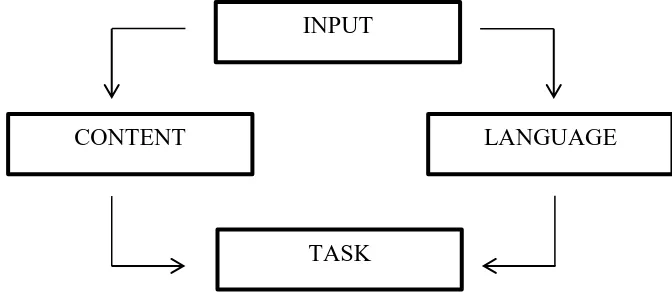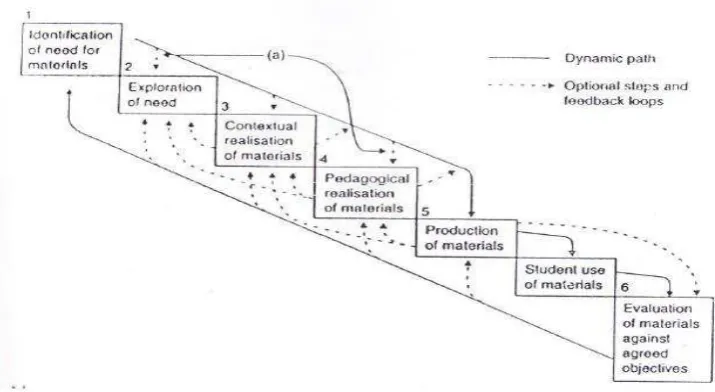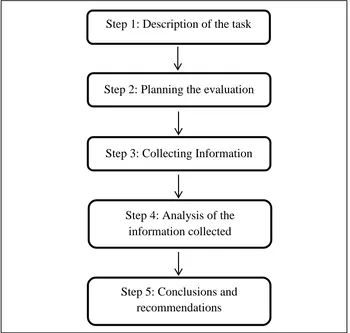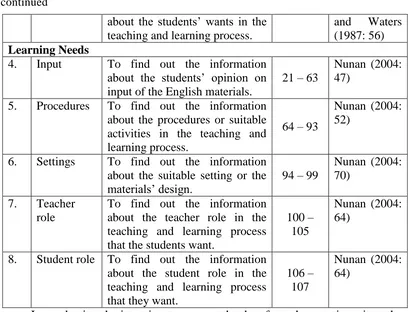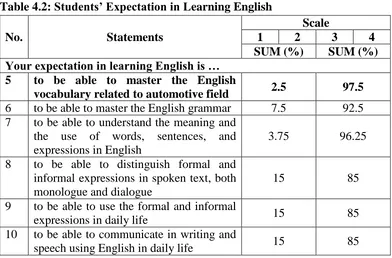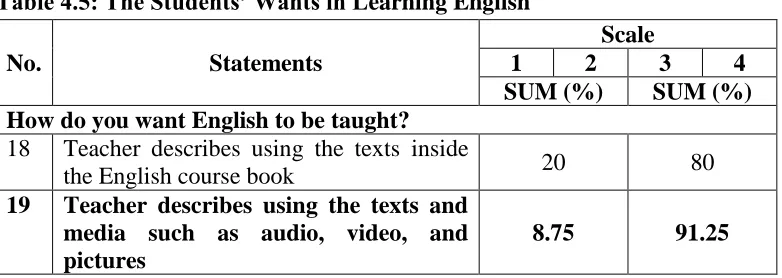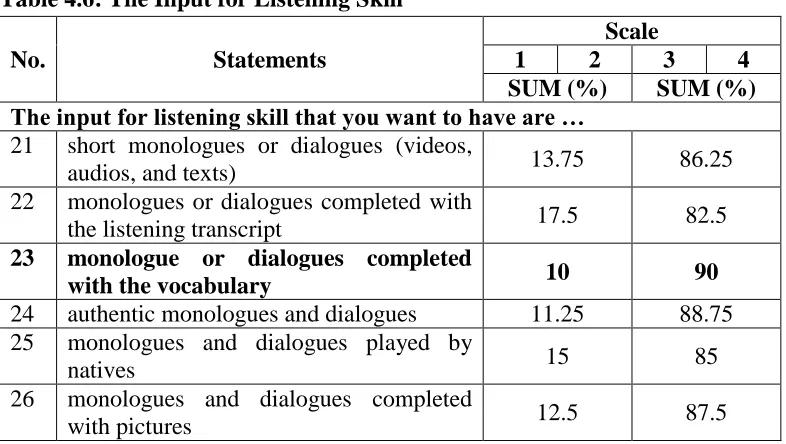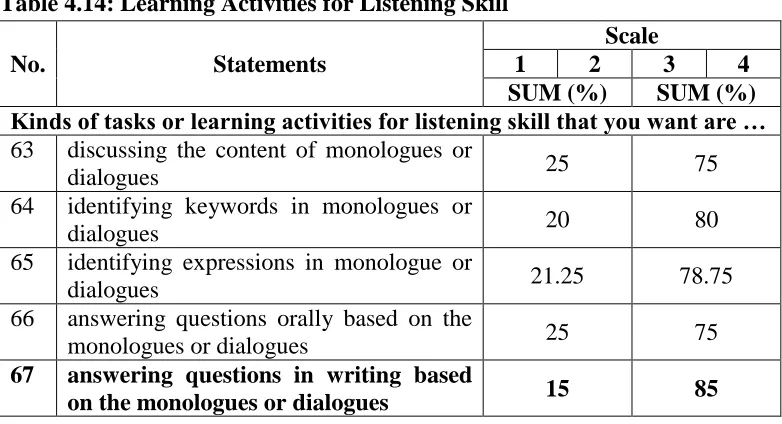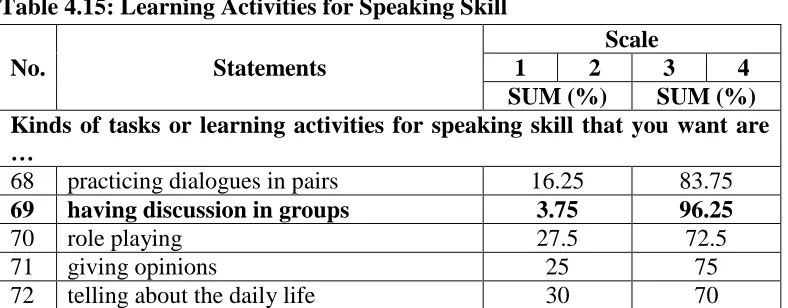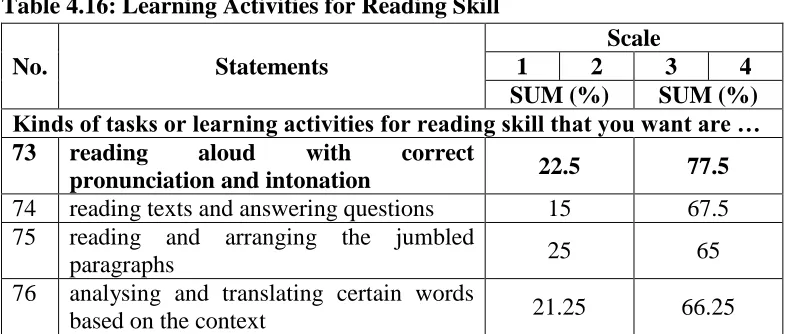THE TENTH GRADERS OF AUTOMOTIVE ENGINEERING
STUDY PROGRAMME AT SMK YAPPI WONOSARI
A Thesis
Presented as a Partial Fulfillment of the Requirements for the Attainment of the Sarjana Pendidikan Degree in English Language Education
by:
Silvia Dayu Anggraini 12202241041
ENGLISH EDUCATION DEPARTMENT
FACULTY OF LANGUAGES AND ARTS
STATE UNIVERSITY OF YOGYAKARTA
v
I lovingly dedicate this thesis to:
vi
“For indeed, with hardship (will be) ease.” QS. Ash-Sharh (94): 5
“Working hard is important, but there is something that matters even more: believing yourself.”
vii
I am very grateful to Allah SWT, the Almighty and the Most Merciful. Alhamdulillah, all praises be to Allah who always gives me the best things in my life, because of His mercy and blessing, I could finish my thesis.
I would like to express my deep gratitude to my super supervisor, Tri Wahyuni Floriasti, S.Pd, M.Hum., for her guidance, advices, encouragement, and attention during the process of this thesis writing. Moreover, I would like to express my gratitude to Dr. Agus Widyantoro, M.Pd, for the willingness to be the evaluator of the materials that I have been developed and Dwiyani Pratiwi, M.Hum, my academic advisor, for the encouragement along my study.
I also thank the principal of SMK YAPPI Wonosari, Drs. Mustangid, M.Pd, for giving me permission to conduct the research in the school and Rahayu Sawitri, S.S and Lilis Setyorini, S.Pd, for their cooperation and advices during the research. Lots of thanks go to all students of class OA, OB, OC, and OD for being cooperative during the research.
I would like to express my deepest gratitude for the most influential people in my life. I would like to thank my dearest mother, Ibu Sulistyowati, who always says my name in her prayers and has my back, my great father, Bapak Pamudji, who always supports and believes in me even when I don’t believe in myself, and my little brother, Dhika, who has his own ways to express his love and attention for me.
viii
this thesis is far from being perfect. Therefore, any suggestions, criticism, and ideas for the improvement of this thesis are greatly appreciated.
Yogyakarta, 21 July 2016
ix
COVER………. i
APPROVAL SHEET……… ii
RATIFICATION……….. iii
SURAT PERNYATAAN………. iv
DEDICATIONS……… v
MOTTOS………... vi
ACKNOWLEDGEMENT……… vii
TABLE OF CONTENTS………. ix
LIST OF TABLES……… xi
LIST OF FIGURES……….. xiii
LIST OF APPENDICES……….. xiv
ABSTRACT………. xv
CHAPTER I: INTRODUCTION………. 1
A. BACKGROUND OF THE STUDY……… 1
B. IDENTIFICATION OF THE PROBLEMS………. 2
C. DELIMITATION OF THE PROBLEMS……… 4
D. FORMULATION OF THE PROBLEMS……… 4
E. OBJECTIVES OF THE STUDY……….. 4
F. SIGNIFICANCES OF THE STUDY………... 5
CHAPTER II: LITERATURE REVIEW, RELEVANT STUDIES, AND CONCEPTUAL FRAMEWORK………. 6
A. LITERATUR REVIEW……… 6
1. ENGLISH IN VOCATIONAL HIGH SCHOOL………... 6
2. ENGLISH FOR SPECIFIC PURPOSES……… 10
3. THEORY OF LEARNING: ZPD………... 12
x
6. UNIT DESIGN DEVELOPMENT………. 19
7. TASK DESIGN DEVELOPMENT……… 21
8. MATERIALS EVALUATION………... 26
9. ASSESSING THE FOUR SKILLS……… 30
B. RELEVANT STUDIES……… 34
C. CONCEPTUAL FRAMEWORK………. 35
CHAPTER III: RESEARCH METHOD……….. 37
A. TYPE OF THE RESEARCH……… 37
B. RESEARCH SETTING……… 37
C. RESEARCH SUBJECTS………. 38
D. DATA COLLECTION TECHNIQUE AND INSTRUMENTS………... 38
E. DATA ANALYSIS TECHNIQUES………. 40
F. RESEACH PROCEDURE………... 43
CHAPTER IV: RESEARCH FINDINGS AND DISCUSSION……….. 46
A. RESEARCH FINDINGS……….. 46
1. THE RESULTS OF NEED ANALYSIS……… 46
2. THE COURSE GRID………. 65
3. THE FIRST DRAFT OF THE MATERIALS……… 71
4. THE RESULTS OF EXPERT JUDGEMENT………... 80
B. DISCUSSION………... 94
CHAPTER V: CONCLUSIONS AND SUGGESTIONS………. 99
A. CONCLUSIONS………... 99
B. SUGGESTIONS………... 102
xi
TABLE 2.1: STANDAR COMPETENCE AND BASIC COMPETENCE OF LEVEL NOVICE OF VOCATIONAL HIGH SCHOOL USED IN
DEVELOPED MATERIALS………... 7
TABLE 2.2: BASIC COMPETENCES AND MICRO SKILLS……….. 8
TABLE 2.3: THE LIST OF QUESTIONS IN GRADING AND SEQUENCING TASKS………. 20
TABLE 2.4: SCORING RUBRIC OF SPEAKING……….. 32
TABLE 2.5: SCORING RUBRIC OF WRITING……… 33
TABLE 3.1: THE ORGANISATION OF THE FIRST QUESTIONNAIRE………... 38
TABLE 3.2: THE ORGANISATION OF THE INTERVIEW GUIDELINES……… 39
TABLE 3.3: THE ORGANISATION OF THE SECOND QUESTIONNAIRE…….. 40
TABLE 3.4: TABLE OF CONVERSION FROM QUANTITATIVE DATA TO DESCRIPTIVE ANALYSIS………. 43
TABLE 4.1: THE USE OF ENGLISH IN THE FUTURE………... 47
TABLE 4.2: STUDENTS’ EXPECTATIONS IN LEARNING ENGLISH…………. 48
TABLE 4.3: THE USE OF ENGLISH IN WORK LIFE……….. 49
TABLE 4.4: THE LACKS OF STUDENTS IN LEARNING ENGLISH……… 50
TABLE 4.5: THE STUDENTS’ WANTS IN LEARNING ENGLISH……… 51
TABLE 4.6: THE INPUT FOR LISTENING SKILL………... 53
TABLE 4.7: THE LENGTH OF LISTENING TEXTS……… 53
TABLE 4.8: THE INPUT FOR SPEAKING SKILL……… 54
TABLE 4.9: THE LENGTH OF SPEAKING TEXTS………. 54
TABLE 4.10: THE INPUT FOR READING SKILL……… 55
TABLE 4.11: THE LENGTH OF READING TEXTS………. 55
TABLE 4.12: THE INPUT FOR WRITING SKILL……… 56
TABLE 4.13: THE LENGTH OF WRITING TEXTS……….. 56
TABLE 4.14: LEARNING ACTIVITIES FOR LISTENING SKILL……….. 57
TABLE 4.15: LEARNING ACTIVITIES FOR SPEAKING SKILL………... 58
TABLE 4.16: LEARNING ACTIVITIES FOR READING SKILL………. 59
TABLE 4.17: LEARNING ACTIVITIES FOR WRITING SKILL………. 60
TABLE 4.18: LEARNING ACTIVITIES FOR MASTERING GRAMMAR……….. 61
TABLE 4.19: LEARNING ACTIVITIES FOR MASTERING VOCABULARY…... 61
xii
TABLE 4.23: STUDENT ROLE………... 64
TABLE 4.24: THE FIRST DRAFT OF UNIT 1………... 71
TABLE 4.25: THE FIRST DRAFT OF UNIT 2………... 74
TABLE 4.26: THE FIRST DRAFT OF UNIT 3………... 77
TABLE 4.27: THE CONTENT APPROPRIATENESS OF UNIT 1……… 81
TABLE 4.28: THE LANGUAGE APPROPRIATENESS OF UNIT 1……… 82
TABLE 4.29: THE PRESENTATION APPROPRIATENESS OF UNIT 1………… 82
TABLE 4.30: THE LAYOUT APPROPRIATENESS OF UNIT 1……….. 83
TABLE 4.31: THE REVISION OF UNIT 1………. 84
TABLE 4.32: THE VALIDATION OF UNIT 1………... 85
TABLE 4.33: THE CONTENT APPROPRIATENESS OF UNIT 2……… 86
TABLE 4.34: THE LANGUAGE APPROPRIATENESS OF UNIT 2……… 86
TABLE 4.35: THE PRESENTATION APPROPRIATENESS OF UNIT 2………… 87
TABLE 4.36: THE LAYOUT APPROPRIATENESS OF UNIT 2……….. 87
TABLE 4.37: THE REVISION OF UNIT 2………. 88
TABLE 4.38: THE VALIDATION OF UNIT 2………... 88
TABLE 4.39: THE CONTENT APPROPRIATENESS OF UNIT 3……… 90
TABLE 4.40: THE LANGUAGE APPROPRIATENESS OF UNIT 3……… 91
TABLE 4.41: THE PRESENTATION APPROPRIATENESS OF UNIT 3………… 91
TABLE 4.42: THE LAYOUT APPROPRIATENESS OF UNIT 3……….. 92
TABLE 4.43: THE REVISION OF UNIT 3………. 92
TABLE 4.44: THE VALIDATION OF UNIT 3………... 94
xiii
FIGURE 2.1: A MATERIALS DESIGN MODEL………. 16
FIGURE 2.2: THE PROCESS OF MATERIALS WRITING……… 17
FIGURE 2.3: THE COMPONENTS OF TASK………. 22
xiv
APPENDIX A: THE NEED ANALYSIS QUESTIONNAIRE APPENDIX B: THE NEED ANALYSIS DATA
APPENDIX C: INTERVIEW GUIDELINES APPENDIX D: INTERVIEW TRANSCRIPTS APPENDIX E: COURSE GRID
APPENDIX F: FIRST DRAFT OF THE MATERIALS
APPENDIX G: THE EXPERT JUDGEMENT QUESTIONNAIRE APPENDIX H: THE EXPERT JUDGEMENT DATA
APPENDIX I: FINAL DRAFT OF THE MATERIALS APPENDIX J: DOCUMENTATION
xv
GRADERS OF AUTOMOTIVE ENGINEERING STUDY PROGRAMME AT SMK YAPPI WONOSARI
Silvia Dayu Anggraini 12202241041
Abstract:
The objectives of this study are: 1) to describe the target needs, 2) to describe the learning needs, and 3) to develop the appropriate materials for the tenth graders of automotive engineering study programme at SMK YAPPI Wonosari.
The type of this study is Research and Development (R n D). This study involved 80 tenth graders of automotive engineering study programme and an English teacher of SMK YAPPI Wonosari, Gunung Kidul, as the subjects to collect the data for the need analysis step. Questionnaire and interview guidelines were the instruments used to collect the data related to the students’ needs in learning English. The data from the questionnaire were calculated the percentage and the data from the interview was analysed using qualitative data analysis proposed by Miles, Huberman, and Saldana (2014). Based on the results of needs analysis, the curriculum, and the syllabus used in the school, the course grid was created and a draft of English materials was developed. The draft was reviewed and evaluated by the expert judge. The instrument to collect the data for the materials’ evaluation was questionnaire adapted from BSNP (Badan Standar Nasional Pendidikan). To determine the quality of developed materials, the expert judge put a check in the scale of each item of the questionnaire. The quality of the developed materials was based on the mean score of the aspects of the questionnaire.
The result of the need analysis shows that students prefer to have the English materials which close to their daily life, relate with their field and make them active in learning process. They also want the teacher becomes the main example before the activities in the class and the corrector of their mistakes. Based on the result of the expert judgment, the developed materials are suitable for the tenth graders of automotive engineering study programme. This is shown by the mean score of 3.74 and is categorised as Very Good.
1
INTRODUCTION
This chapter is divided into six subheadings explaining the background of the study, identification of the problems, delimitation of the problems, formulation of the problems, objectives of the study, and significances of the study.
A.Background of the Study
Vocational high school students are prepared to face their work life. In order to be able to work effectively and to enhance their skills and competences, they have to master their skills related to their study programme and to be able to communicate in accordance with their future work demand (BSNP, 2006: 17). Thus, English in vocational high schools is set to equip their students with the communication skill which match with their field.
In order to achieve that, Vocational High School students have to learn specific English materials in accordance with their field. Materials play the important role in teaching and learning activities, since materials help the students to learn the language. However, the existing English materials are still designed for Vocational High School students in general.
The existing materials used by the students to learn English in SMK YAPPI Wonosari are in the form of Students’ worksheets or Lembar Kerja Siswa.
students’ study programmes. This condition is not in line with the purpose of
English in vocational high schools as stated earlier.
The teacher, sometimes, provides additional worksheets taken from any resources like the Internet, newspapers, and others to improve the students’ skills and to enrich their input. Nevertheless, the teacher does not provide the specific worksheets for the specific study programme.
Thus, based on the problems stated above, the tenth graders of Automotive Engineering Study Program at SMK YAPPI Wonosari cannot learn English maximally. The students need the specific English materials which are relevant with their field to prepare themselves for their work life.
B.Identification of the Problem
English materials take the important role in teaching and learning activity. They support the students to be able to learn English maximally so that students can improve their English competencies. In fact, there are some problems occur related to the English materials used in SMK YAPPI Wonosari. The problems are described as follows.
the result, students of automotive engineering study programme do not meet their needs in learning English.
The second problem deals with the students’ additional worksheets. Sometimes, the teacher provides worksheets for the students for the enrichment purposes. Yet, the teacher does not provide the specific worksheet for the specific study programme. As the result, students of automotive engineering study programme do not meet their needs in learning English.
The third problem is the materials for TOEIC preparation. As the non-native speaker of English, TOEIC is important for the students of vocational high school to measure their mastery in English as TOEIC, sometimes, becomes one of the conditions for applying for jobs. SMK YAPPI Wonosari always holds the TOEIC test for the third graders of all study programmes. However, there are no materials for preparing students for TOEIC since they were in the first grade. As the result, the students of automotive engineering study program cannot prepare themselves for taking the TOEIC test.
C.Delimitation of the Problems
Because of the limitation of the time, energy, and access to the literature, this study focuses on developing English materials for the tenth graders of automotive engineering study programme at SMK YAPPI Wonosari. This book is developed
expected to be able to help the tenth graders of automotive engineering study program in improving their communication skills in English.
D.Formulation of the Problems
Based on the limitation of the problems above, the formulation of the problems are as follows.
1. What are the target needs of the tenth graders of automotive engineering study programme at SMK YAPPI Wonosari?
2. What are the learning needs of the tenth graders of automotive engineering study programme at SMK YAPPI Wonosari?
3. What are the appropriate English materials for the tenth graders of automotive engineering study programme at SMK YAPPI Wonosari?
E.Objectives of the Study
The objectives of the study are formulated as follows.
1. To describe the target needs of the tenth graders of automotive engineering study programme at SMK YAPPI Wonosari.
2. To describe the learning needs of the tenth graders of automotive engineering study programme at SMK YAPPI Wonosari.
F. Significances of the Study
This study is expected to be useful for: 1. English Education Department
This research can be a reference in conducting the Research and Development study and developing materials in English for Specific Purposes. 2. English Teachers of Vocational High School
This research can be a motivation for the teachers of vocational high school to develop the specific materials relevant with the study programs.
3. Students of automotive engineering study programme at SMK YAPPI Wonosari
The English materials developed in this research are expected to fulfill the
students’ needs in learning English and to improve their communication skills in English.
4. Other Researchers
6
LITERATURE REVIEW, RELEVANT STUDIES, AND CONCEPTUAL FRAMEWORK
Based on the research objectives, this chapter presents some theories of English in Vocational High Schools, English for Specific Purposes, The Theory of Learning: ZPD, Task-based Language Teaching, Materials Development, Unit Design Development, Task Design Development, Materials Evaluation, and Assessing the four skills. This chapter also presents the relevant studies and at the end of the chapter, the whole process of materials development will be summarised in conceptual framework.
A. Literature Review
1. English in Vocational High School a. English in Vocational High School
As stated in Badan Standar Nasional Pendidikan (2006: 384), English in Vocational High School is an adaptive lesson aimed to equip students with communication skills, both spoken and written, which match with their program skills in daily life context based on the global demand.
There are two main objectives of English in Vocational High School as follows:
2) Applying the skills of English to communicate both spoken and written in intermediate level.
English in Vocational High School is divided into three different levels namely 1) novice level for the first graders, 2) elementary level for the second graders, and 3) intermediate level for the third graders.
b. Competence
Because of having the different aims from other schools, vocational high school has the different basic competences and standard competences. Below is presented the standard competence and basic competences of level novice in Vocational High School used in the developed materials (Badan Standar Nasional Pendidikan, 2006: 385-386):
Table 2.1: Standard Competence and Basic Competence of Level Novice of Vocational High School Used in the Developed Materials Standard Competence Basic Competences
1. Communicating in English at Level Novice
1.2Mentioning things, people, characteristics, time, days, months, and years
1.3Describing things, people, characteristics, time, days, months, and years
1.4Producing simple expressions for the basic functions
1.6Understanding memos and simple menus, schedules of public transportations, and traffic signs
Table 2.2: Basic Competences and Micro Skills
Basic Competences Micro Skills
1.2. Mentioning
- Discriminate among the distinctive sounds of English.
- Distinguish word boundaries, recognising a core of words, and interpret word order patterns and their significance.
- Recognise grammatical word classes (nouns, verbs, etc.), systems (e.g. tense, agreement, and pluralisation), patterns, rules, and elliptical forms. - Recognise that a particular meaning may be
expressed in different grammatical forms.
- Recognise the communicative functions of utterances, according to situations, participants, and goals.
- Infer situations, participants, goals using real-world knowledge.
- Develop and use a battery of listening strategies, such as detecting key words, guessing meaning of words from context, appeal for help, and signalling comprehension or lack thereof.
(Brown, 2000: 256) Reading:
- Discriminate among the distinctive graphemes and orthographic patterns of English.
- Recognise a core words, and interpret word order patterns and their significance.
- Recognise grammatical word classes (nouns, verbs, etc.), systems (e.g. tense, agreement, and pluralisation), patterns, rules, and elliptical forms. - Recognise that a particular meaning may be
expressed in different grammatical forms.
- Recognise cohesive devices in written discourse and their role in signalling the relationship between and among clauses.
- Recognise the communicative functions of written texts, according to form and purpose. - Infer links and connections between events, ideas,
discourse markers, guessing the meaning of words from context, and activating schemata for the interpretation of texts.
(Brown, 2000: 272) Speaking:
- Produce chunks of language of different lengths. - Orally produce differences among the English
phonemes and allophonic variants.
- Use grammatical word classes (noun, verbs, etc.), systems (e.g. tense, agreement, and pluralisation), word order, patterns, rules, and elliptical forms. - Produce speech in natural constituents – in
appropriate phrases, pause groups, breath groups, and sentences.
- Express particular meaning in different grammatical forms.
- Accomplish appropriate communicative functions according to situation, participants, and goals. - Develop and use a battery of speaking strategies,
such as emphasizing key words, rephrasing, providing a context for interpreting the meaning of words, and appealing for help.
(Brown, 2000: 307) Writing:
- Produce graphemes and orthographic patterns of English.
- Produce an acceptable core of words and use appropriate word order patterns.
- Use acceptable grammatical system (e.g. tense, agreement, and pluralisation), patterns, and rules. - Express a particular meaning in different
grammatical forms.
- Use cohesive devices in written discourse.
- Appropriately accomplish the communicative functions of written texts according to form and purpose.
- Convey links and connections between events and communicate such as relations as main idea, supporting idea, new information, given information, generalization, and exemplification. - Develop and use a battery of writing strategies,
such as accurately assessing the audience’s
interpretation, using prewriting devices, writing with fluency in the first draft, using paraphrase continued
and synonyms, etc.
(Brown, 2000: 343)
2. English for Specific Purposes (ESP) a. The Definition of ESP
Hutchinson and Waters (1987: 19) define ESP as an approach to language teaching in which the decisions related to content and method are
based on learner need and learner’s reason for learning. In addition, Johns (in Paltridge & Starfield, 2013: 2) states that ESP is the teaching and learning of English where the learners’ goal is to use English in particular field. Further, Nunan (2004: 7) adds that ESP is an important subcomponent of language teaching which has its own approaches to curriculum development, materials design, pedagogy, testing and research.
Thus, it can be said that ESP is an approach of language teaching based
on the learners’ needs in using English.
b. The Need Analysis in ESP
Need analysis is the procedures in gathering information about the
learners’ needs as the basis for developing the curriculum (Richards, 2001: 51; Brown, 1995: 35). Furthermore, Hutchinson and Waters (1987: 12) define need analysis as identifying the target situation and carrying out the detailed analysis of the linguistic features that will form the syllabus of the ESP course.
Richards (2001: 53) lists the reasons why need analysis should be conducted before designing materials as follows:
1) Determining current levels of language proficiency
2) Determining the language learners who need language training
3) Identifying learners’ perceptions of language problems and difficulties they face
4) Ascertaining the types of transactions that will be typically performed in English
5) Determining the language characteristics of each transaction
6) Assessing the extent to which the learners’ needs are met by currently available textbooks and other materials
Hutchinson and Waters (1987: 54) divide needs into two types namely target needs and learning needs. Target needs mean what the learners need to do in the target situation. Target needs include necessities, lacks, and wants.
‘Necessities’ is what the learner has to know in order to function effectively in target situation. It is not enough to know the necessities only, we need to
know the learners’ lacks as well. Lacks mean the gap between what the learner already knows and what the learner needs to know. The last is dealing with the learners’ wants. Want is the learners’ view to what their needs are.
While learning needs mean the knowledge and abilities the learners will require in order being able to perform to the required degree of competence in the target situation (Hutchinson and Waters, 1987: 60).
3. Theory of Learning: Zone of Proximal Development
The term of Zone of Proximal Development (ZPD) is probably well-known as the idea of Lev Vygotsky. This concept is now widely used in studies about teaching and learning in many subject areas and one of them is in second or foreign language learning.
Vygotsky (1982, in Hedegaard, 2005: 224-225) believes that children can perform much better in doing something when they are guided by adult or more experienced and competent people than when they do alone. He also believes that what the children can do in collaboration today they can do independently tomorrow. Then, he defines ZPD as the distance between the level of solved task that can be performed with adult guidance and help and the level of solved task that can be performed independently.
Chaiklin (in Kozulin et al., 2003: 40) adds that ZPD presupposes an interaction between more competent person and a less competent person on a task, then the less competent person becomes independently experienced at what was a joint-accomplished task.
4. Task-based Language Teaching (TBLT) a. The Definition of TBLT
Task-based Language Teaching (TBLT) or Task-based instruction is a methodology that can be regarded as a developing from a focus on classroom processes (Richards, 2006: 30). Further, Richards and Renandya (2002: 93) add TBLT as the use of task which serve to facilitate meaningful communication and interaction.
Moreover, Willis & Willis (2007: 1) and Nunan (2004: 19) state that Task-based Language Teaching is the effective way to teach a language as TBLT engages the learners in the real language use in the classroom and the
materials used are closely with the students’ daily life.
Thus, it can be summarised that TBLT is a methodology that uses tasks to engage the learners in the real language use in the classroom.
b. The Principles of Task-based Language Teaching (TBLT)
Nunan (2004: 35) underlines the seven principles of TBLT as follows. 1) Scaffolding
Lessons and materials should provide supporting framework within which the learning takes place. At the beginning of the learning process, learners should not be expected to produce language that has not been introduced either explicitly or implicitly.
2) Task Dependency
3) Recycling
Recycling language maximised opportunities for learning and activates the organic learning principle.
4) Active Learning
Learners learn best by actively using the language they are learning. 5) Integration
Learners should be taught in ways that make clear the relationship between linguistic form, communicative function, and semantic meaning. 6) Reproduction to Creation
Learners should be encourages to move from reproductive to creative language use.
7) Reflection
Learners should be given opportunities to reflect on what they have learned and how what they are doing.
5. Materials Development a. The Nature of Materials
Some characteristics of good materials have been listed by Tomlinson (1998: 7-22) as follows:
1) Materials should achieve impact
2) Materials should help learners to feel at ease
3) Materials should help learners to develop confidence
4) What is being taught should be perceived by learners as relevant and useful
5) Materials should require and facilitate learner self-investment 6) Learners must be ready to acquire the points being taught
7) Materials should expose the learners to language in authentic use
8) The learners’ attention should be drawn to linguistic features of the input 9) Materials should provide the learners with opportunities to use the target
language to achieve communicative purpose
10) Materials should take into account that the positive effect of instruction are usually delayed
11) Materials should take into account that learners differ in learning styles 12) Materials should take into account that learners differ in affective
attitudes
13) Materials should permit a silent period at the beginning of instruction 14) Materials should maximize learning potential by encouraging
intellectual, aesthetic and emotional involvement which stimulates both right and left brain activities
15) Materials should not rely too much on controlled practice 16) Materials should provide opportunities for outcome feedback
Moreover, Hutchinson and Waters (1987: 107-108) identify some principles related to a good characteristic as follows:
1) Materials provide a stimulus to learning.
2) Materials help to organize the teaching and learning process by providing a path through the complex mass of the language to be learnt.
3) Materials embody a view of the nature of language and learning. 4) Materials reflect the nature of the learning task.
5) Materials can have a very useful function in broadening the basis of teaching training by introducing teachers to new techniques.
6) Materials provide models of correct and appropriate language use.
Form the descriptions above, it can be said that materials take the important role in teaching and learning activities. Materials become the input
us the appropriate materials for teaching and learning process. For vocational high school students, materials should provide the students with the real-world tasks and activities to prepare them to face their work life.
b. Materials Design Model
Hutchinson and Waters (1987: 108-109) present the model that is used to write our own materials. It is visualized by the following figure.
The model of material design consists of four elements as shown in the figure above.
1) Input
Input can be in the form of texts, dialogues, videos, diagrams, or any communication data. The input provides a number of things such as stimulus materials for activities, new language items, correct models of language use, a topic for communication, opportunities for learners to use their information processing skills, and opportunities for learners to use their existing knowledge both of the language and the subject matter.
INPUT
CONTENT LANGUAGE
TASK
2) Content
Language is not an end in itself, but the means of conveying information and also feelings about something. Content means the subjects other than language which are taught to generate meaningful communication.
3) Language
The aim of learning language is to enable learners to use language. It means that learners have the chance to take the language to pieces, study how language works, and practice putting it back together again.
4) Task
Materials should be designed to lead towards a communication task in which learners use the content and language knowledge they have built up through the unit.
c. The Process of Materials Writing
Jolly and Bolitho (in Tomlinson, 1998: 98) propose seven steps as the process of materials writing as visualised by the following figure.
The process of materials writing consists of these following steps as can be seen on the Figure 2.2 above.
1) Identification of Needs for Materials
In this step, the researchers need to find the problems or lacks that the students face while learning to be solved. Then, those problems or lacks should be included in the materials.
2) Exploration of Needs
After identifying the needs, researchers must think about the skills and language features that will be practiced by the students.
3) Contextual Realisation of Materials
In this step, researchers propose new materials that can be interested by the students. Researchers must find the suitable ideas, contexts or texts with which to work.
4) Pedagogical Realisation of Materials
This step deals with translating and putting the materials as the result of identification in step 1), 2), and 3) into the appropriate exercises, activities, and instructions to achieve the goals that have been identified and selected.
5) Production of Materials
6) Students Use of Materials
This step refers to introduce and try-out of the materials in the classroom followed by completion of worksheet at home and checking in
the next class. This step aims to know the students’ impression toward the
materials.
7) Evaluation of Materials against Agreed Objectives
There are two kinds of evaluation namely expert judgement and try out or field testing. In expert judgement process, the materials will be evaluated by the expert in materials development. While in try out or field testing, the materials are used in the teaching learning process. The students will give comments after using the materials. Researchers need to know whether the materials have been appropriate for the students to achieve the goals and objectives that have been determined in advance.
6. Unit Design Development
a. Grading, Sequencing, and Integrating Task
Richards, Platt, and Weber (1986 in Nunan, 2004: 113) define grading as
“the arrangement of the content of a language course or textbook so that it is presented in a helpful way. Gradation would affect the order in which words, word meaning, tenses, structures, topics, functions, skills, etc., are presented. Grading may be based on the complexity of an item, its
frequently in written or spoken English, or its importance for the learner”
Table 2.3: The List of Questions in Grading and Sequencing Tasks.
Factor Question(s)
Confidence 1) How confident does the learner have to be carried out the task?
2) Does the learner have the necessary level of confidence?
Motivation 1) How motivating is the task?
Prior learning experience 1) Does the task assume familiarity with certain learning skills?
2) Does the learner’s prior learning experience provide the necessary learning skills/ strategies to carry out the task? Learning peace 1) How much learning material has the observed behaviour in class?
3) In the light of the teacher’s assessment, what overall level of performance can reasonably be expected?
Cultural knowledge or awareness
1) Does the task assume cultural knowledge? 2) If so, can the learner be expected to have
it?
3) Does the task assume knowledge of a particular object?
Linguistic knowledge 1) How much linguistic knowledge does the learner have?
2) What linguistic knowledge is assumed by the task?
b. Task Continuity
with-in task sequencing. With-in task sequencing is divided into three phases as follows.
1) Pre-task Phase
This phase covers a similar function as schema building. The topic and the objectives are introduced by the teacher to students. Brainstorming the ideas is also done by using pictures or some questions. It also orients the learners to the tasks, generates interest, and rehearses essential language that will be required to complete the tasks.
2) Task-proper Phase
In this phase, learners complete the tasks. Several tasks are given to the learners and they do the tasks usually in pairs or in groups.
3) Follow-up Phase
In this phase, learners complete the tasks, usually individually. Then, they get a debriefing from the teacher and present the result in front of the class a whole. Learners may also get feedback from the teacher.
7. Task Design Development a. The Definition of Task
2007: 12) states that task is a range of work-plans which have the overall purpose of facilitating language learning.
Furthermore, according to Richards and Renandya (2002: 94), tasks are activities that learners carry out using their available language recourses and leading to real outcomes.
To sum up, task can be defined as the piece of activity that learners do in order to facilitate the language learning.
b. The Components of Task
Nunan (2004: 41) presents the diagram of task components as follows.
As presented on the diagram above, it can be seen that there are six components of task namely goals, input, procedures, teacher and learner roles, and settings.
1) Goals
Goals refer to general intentions behind any learning task that provide a link between the task and the broader curriculum. Goals may relate to a range of general outcomes such as communicative, affective, or cognitive; or may directly describe teacher or learner behaviour.
TASK Goals
Input
Procedures
Teachers Role Learner
In addition, Nunan (2004: 44) states that the most useful goal statements are those that relate to the students not the teacher, and those that are couched in terms of observable performance.
2) Input
Input refers to the spoken, written, and visual data that the learners work with in the course of completing task (Nunan, 2004: 47). Teachers, textbooks, or some other sources can provide the data for the input. Related to the teaching and learning of English in the classroom, teachers should provide the input which is authentic and appropriate with the proficiency level and interest of the students.
3) Procedures
Nunan (2004: 52) defines procedures as what learners will actually do with the input that forms the point of departure for the learning task. 4) Teacher and learner roles
Nunan (2004: 64) defines role as the part that learners and teachers are expected to play in carrying out learning tasks as well as the social and interpersonal relationship between the participants. Breen and Candlin (1980, in Nunan, 2004: 67) state that there are three main roles of the teacher in the communicative classroom: a) act as the facilitator, b) act as the participant, and c) act as the observer and learner.
b) Learners are interactors and negotiators who are capable of giving as well as taking.
c) Learners are listeners and performers who have little control over the content of learning.
d) Learners are involved in a process of personal growth.
e) Learners are involved in social activities, and the social and interpersonal roles of learners cannot be divorced from psychological learning processes.
f) Learners must take responsibility for his or her own learning, developing autonomy and skills in learning-how-to-learn.
5) Settings
According to Nunan (2004: 70), settings refer to the classroom management specified or implied in the task. It is also requires consideration of whether the task is to be carried out wholly or partly outside the classroom. Based on this argument, it can be said that settings include the seating arrangement such as U-shape, semi-circle, or classic arrangement. Besides, the way the tasks are being done by students, whether individually, in pairs, in small group, or the big group is also included in the settings.
c. Task Types
1) Pedagogical Task
Pedagogical task refers to specially designed classroom tasks that are intended to require the use of specific interactional strategies and may also require the use of specific types of language such as skills, grammar, and vocabulary.
2) Real-world Task
Real-world task refers to the tasks that reflect the real-world uses of language and that might be considered a rehearsal for real-world tasks.
In addition, Nunan (2004: 56-57) proposes three principal of task types namely information gap, reasoning gap, and opinion gap.
1) Information-gap Activity
It involves a transfer of given information from one person to another or from one form to another, or from one place to another, generally calling for the decoding or encoding of the information from or into language.
2) Reasoning-gap Activity
It involves deriving some new information from given information through processes of inference, deduction, practical reasoning, or a perception of relationships or patterns.
3) Opinion-gap Activity
8. Materials Evaluation
a. The Nature of Materials Evaluation
According to Tomlinson (1998: xi), materials evaluation refers to attempts to measure the value of materials in relation to their objectives and to the objectives of the learners using them. Furthermore, Hutchinson and Waters (1987: 96) define evaluation as the matter of judging the fitness of something for a particular purpose. Evaluation is basically a matching process between the needs and the available solution. They add that there is no absolute good or bad, it is only the degrees of fitness for the required purpose.
Brown in Ellis (1998: 220) states the important point that any evaluation can be carried out before, after, or on both occasions the program commences. In addition, McDonough and Shaw (1993 in Ellis, 1998: 220-221) believe that there are two kinds of materials evaluation namely external evaluation and internal evaluation. External evaluation consists of the claims made on the cover of the books, the introduction, and the table of content. It will help to determine the intended audience, the level of proficiency, the
content in which the materials’ writers intend them to be used, the way the
language has been organized into teachable units, and also the writers’ views
on the language and the methodology.
b. The Process of Materials Evaluation
As stated before, evaluation is a process of matching needs to available solution, further, Hutchinson and Waters (1987: 97-98) divide the evaluation process into four major steps as follows.
1) Defining Criteria
This step will have been done in the course design stage. In defining criteria, the questions that should be answered in this step are what bases will you judge the materials and which criteria will be more important. It will be useful to make the comparison among different sets of materials easier.
2) Subjective Analysis
This step is also done during the course design stage. Subjective analysis covers the realisations of the criteria that the writers want in the course.
3) Objective Analysis
The objective analysis answers the question of how the materials being evaluated realise the criteria.
4) Matching
The last step is matching. It covers the answer of how far the materials match with the needs.
collecting information, analysis of the information collected, and conclusions and recommendations.
To make it easier to understand, the steps are shown in the figure below.
1) Step 1: Description of the task
A clear description of the task to be evaluated is required in the evaluation process. To achieve that, specifying the content of a task (input, procedures, and language activities) and objectives are needed.
Step 1: Description of the task
Step 2: Planning the evaluation
Step 3: Collecting Information
Step 4: Analysis of the information collected
2) Step 2: Planning the evaluation
It covers the consideration of how the materials developers will evaluate the effectiveness and efficiency of the task. Planning the evaluation is aimed to achieve a systematic and principled evaluation. 3) Step 3: Collecting Information
This step considers on what information to collect, when to collect it, and how to collect it. There are three types of information will be needed to be considered in a task evaluation: a) information about how the task was performed, b) information about what learning look place as a result
of performing the task, and c) information regarding the teacher’s and the learner’s opinion about the task.
4) Step 4: Analysis of the information collected
The important decisions facing the evaluator in this stage of evaluation is whether to provide a quantitative (the use of numbers, the task rate) or a qualitative (whether the task has been accomplished successfully or not) analysis of the data or both.
5) Step 5: Conclusions and recommendations
9. Assessing the Four Skills
Assessment (Brown, 2004: 4) means an on-going process that covers the wider domain such as when students respond to the questions, offer comments, or try out the new words and structures. In those domains, the
teacher usually makes an assessment on the students’ performances. In this
case, tasks can be one of the forms of assessment that the teacher can make. However, not every tasks and teaching activities in the classroom involve assessment. Students in the classroom have to have the freedom to experiment and try out the language without feeling that their competence is being judged in terms of trials and errors.
In assessing the four skills, teachers have to think about the two interacting concepts of performance and observation (Brown, 2004: 117). When students perform the acts of listening, speaking, reading, and writing, they rely on their underlying competence in order to accomplish their
performance. In addition, when the teachers propose to assess the students’
ability in one of the combination of the four skills, teachers assess the
students’ competences but they observe the students’ performances.
Below are the descriptions in assessing the four skills of the language. a. Assessing Listening
In assessing listening, teachers can provide some tasks to the students. The assessment tasks (Brown, 2004: 122-135) can be in the form of intensive listening (minimal phonic pair recognition or paraphrase recognition),
repetition), or extensive listening (dictation, communicative stimulus-response tasks, or authentic listening tasks).
In scoring the listening tasks, one of the approaches in scoring method can be used. The score is defined as the number of the students successfully completed, so that the number of the correct responses added up. For example, there are ten numbers in a task and the teacher gives ten points each for the correct number and then summed up.
b. Assessing Reading
Teachers can design some assessment tasks for reading. According to Brown (2004: 190-215), the tasks can be in the form of perceptive reading (reading aloud, written response, multiple-choice, or picture-cued items), selective reading (multiple-choice for form-focused criteria, matching tasks,
editing tasks, picture-cued tasks, or gap-filling tasks), interactive reading (cloze tasks, impromptu reading plus comprehension questions, short-answer tasks, ordering tasks, etc.), or extensive reading (skimming tasks, summarising and responding, or note-taking and outlining).
The scoring method for assessing reading is similar with the scoring method for assessing listening. The teacher decides the score of each item in a task and then summed up.
c. Assessing Speaking
In designing tasks for assessing speaking, teachers can use imitative speaking (simple repetition tasks), intensive speaking (directed response
questionnaires, etc.), responsive speaking (question and answer, giving instructions and directions, or paraphrasing), interactive speaking (interview, role-play, discussions and conversations, or games), or extensive speaking (oral presentations or picture-cued story telling).
For the scoring method, the scoring rubric can be used to define the
speaking score. The table below is the example of the speaking’s scoring
rubric adapted from the oral proficiency scoring categories proposed by Brown (2001, in Brown, 2004: 172-173).
Table 2.4: Scoring Rubric of Speaking.
Aspect Description Score
Grammar Errors in grammar are quite rare. Able to use
the language accurately. 25
Control of grammar is good. Able to speak the language with sufficient structural accuracy. Errors in grammar are frequent but still can be
understood by the other speakers. 10 Vocabulary Can understand and participate in any
conversation with a high degree of precision of vocabulary.
25 Able to speak the language within sufficient
vocabulary to participate in the conversation. Vocabulary is broad enough.
20 Has speaking vocabulary sufficient to express
himself simply with some circumlocution. 15 Speaking vocabulary inadequate to express
anything but the most elementary needs. 10 Fluency Able to use the language fluently. Can
participate in any conversation with the high degree of fluency.
25
facility most social situation. Sometimes,
speak with hesitation.
Speak with hesitation. Not confidence in any
conversation. Usually grope for words. 10 Pronunciation Errors in pronunciation are quite rare. 25 Errors never interfere with understanding. 20 Errors in pronunciation sometimes occur. 15 Errors in pronunciation are frequent. 10
d. Assessing Writing
The tasks that can be used by the teachers to assess writing are varied. Those include imitative writing (tasks in hand writing letters, words, and punctuation, spelling tasks, etc.), intensive controlled writing (dictation and dicto-comp, grammatical transformation tasks, picture-cued tasks, vocabulary assessment tasks, ordering tasks, short-answer and sentence completion tasks), responsive and extensive writing (paraphrasing, guided question and answer, paragraph construction tasks, etc.).
The scoring rubric can be used in defining the score for assessing writing. The example of scoring rubric for writing adapted from Brown and Bailey (1984, in Brown, 2004: 244-245) is presented in a table below.
Table 2.5: Scoring Rubric for Writing.
Aspects Description Score
Content Can follow the assigned topic. The ideas
developed thoroughly. 25
Can follow the assigned topic but some points are missed. Ideas could be more fully
topic carefully. 10
Grammar Advance proficiency in English grammar.
Some grammar problems don’t influence
communication.
25 continued
Some grammar problems are apparent and
have negative effect on communication. 20 Grammar problems interfere with
communication of the writer’s ideas. Difficult
to read sentences.
15 Severe grammar problem interfere greatly
with the message. Reader can’t understand
what the writer was trying to say.
10 Style and
quality of expression
Attempts variety, good vocabulary, not
wordy. 25
Some vocabulary misused. Maybe too wordy. 20 Poor expression of ideas. Problems in
vocabulary. 15
Inappropriate use of vocabulary. No sentence
variety. 10
Mechanic and spelling
Correct use of punctuation, capital letter, and
spelling. 25
Some problems with punctuation and capital
letter. Occasional spelling errors. 20 Punctuation errors interfere with ideas.
Spelling problems distract readers. 15 Severe spelling problems. Errors in sentence
punctuation and obvious in capital missing. 10
B. Relevant Studies
Supporting the literature review above, there are some researchers who have conducted the similar studies some years ago. The first is Nazenin Ruso (2007) who conducted a research under the title The Influence of Task-based Learning on EFL Classrooms. The second is Etika Putri Istiqomah (2014) who conducted a
research under the title Developing English for Tenth Grade Students of Boga Department at SMK 4 Yogyakarta.
The Ruso’s finding states that task-based learning (TBL) or task-based language teaching (TBLT) is helpful to increase the students’ motivation and learning. TBL or TBLT encourages students’ practice opportunities in using the target language in the lessons as a result of presenting various tasks. In the light of
students’ reflections for the tasks used during the study, which are very positive, it
can be concluded that students accept the idea of TBL or TBLT while learning English as a second language.
She also mentions that the students’ attitudes toward TBL or TBLT are very positive. Students indicate that more emphasis is shown on interaction in class. This interaction is encouraged not only individually but also within group work. Students also say that their teacher presented various tasks in class and they make use of practice opportunities.
Further, Istiqomah (2014) develops the English learning materials using Task-based Language Teaching (TBLT). She develops the English materials that
match with the students’ learning needs and target needs. The materials cover the
four skills of English and it is developed well.
C. Conceptual Framework
It has been mentioned in Chapter I that vocational high school students are prepared to face their work life. They are equipped not only with the basic knowledge of their study programme but also with the communication skills in daily life context based on the global demand.
As vocational high schools have different aim from other schools, they need the specific English materials which match with their study programme. Materials are presented in the form of tasks with the clear instruction, so that it can function properly. The tasks should be related with their study programme, needs, and close to their real life situation. This kind of materials can help the vocational high school students to master their English to face their work life.
Based on the problem stated earlier and the good advantages of using tasks by some people above, the researcher decides to do a research on Developing Task-based English Materials for the Tenth Graders of Vocational High School. They are developed based on the principle of effective tasks that have been proposed by some experts such as Nunan (2004), Hutchinson and Waters (1989), Tomlinson (1998), and other experts.
37
RESEARCH METHOD
The relevant studies of this research have been discussed in the previous chapter. This chapter describes the type of the research, research setting, research subjects, data collection techniques and instruments, data analysis techniques, and research procedure.
A.Type of the Research
As stated in previous chapter, this research is aimed to develop task-based English materials for the tenth graders vocational high school students majoring in automotive engineering. Therefore, it is categorised into educational research and development. Gall, Gall, and Borg (2003: 569) define educational research and development as the process of developing and validating the educational products and procedures.
B.Research Setting
C.Research Subjects
The population of this research were 136 tenth graders of automotive engineering study programme. However, because of the limitation of the time, there were only 80 students and an English teacher participated in data collection in this research.
D.Data Collection Techniques and Instrument
There are two kinds of data in this research: data related to students’ needs
and data related to materials’ evaluation after the materials developed. The
instruments used to collect data related to students’ needs were questionnaires and
interview guidelines. The instrument used to collect data related to materials’
evaluation was a questionnaire.
The first questionnaire, which was used to collect the data for students’ needs, focused on the target needs and learning needs of English materials the students wanted. The detailed questions can be seen in Table 3.1.
No. Aspects The Purpose of the Questions Item
Number References Target Needs
1. Necessities To find out the information
about students’ necessities in the
teaching and learning process.
1 – 13
Hutchinson and Waters (1987: 55) 2. Lacks To find out the information
about students’ difficulties in the
teaching and learning process.
14 – 17
Hutchinson and Waters (1987: 55) 3. Wants To find out the information 18 – 20 Hutchinson Table 3.1: The Organisation of the First Questionnaire
about the students’ wants in the
teaching and learning process.
and Waters (1987: 56) Learning Needs
4. Input To find out the information
about the students’ opinion on
input of the English materials.
21 – 63 teaching and learning process that the students want.
100 – teaching and learning process that they want.
106 – 107
Nunan (2004: 64)
In conducting the interview to support the data from the questionnaires, the interview guidelines were created. To get more detail, the interview guidelines can be seen in the following table.
Table 3.2: The Organisation of Interview Guidelines
No. Aspects The Purpose of the Questions References 1 Necessities To find out the information about
students’ necessities in the teaching and
learning process.
Hutchinson and Waters (1987: 55)
2 Lacks To find out the information about
students’ difficulties in the teaching and
learning process. teaching and learning process.
Hutchinson and Waters (1987: 58)
Some documents such as the curriculum and syllabus were used as the reference in creating the course grid before the materials developed.
The second questionnaire, which was used to collect the data related to
materials’ evaluation, focused on the quality of the English materials that have
been developed from the aspects of content, language, presentation, and layout design. The details of the second questionnaire can be seen in Table 3.3.
Table 3.3: The Organisation of Second Questionnaire
No. The Purpose of the Questions Reference 1. To find out the appropriateness of the content
in the material. BSNP (2011)
2. To find out the appropriateness of the language
in the material. BSNP (2011)
3. To find out the appropriateness of the
presentation in the material. BSNP (2011)
4. To find out the appropriateness of the layout
design in the material. BSNP (2011)
E.Data Analysis Techniques
In this research, there were two kinds of data: the data related to the students’ needs and the data related to the materials’ evaluation. The first data was taken from the need analysis questionnaires and interview before the designing the materials. The questionnaires were classified into the quantitative data, while the interview was classified into the qualitative data. The purpose of distributing questionnaires and conducting the interview was to collect the appropriate data of
collecting the data, the researcher converted the questionnaires and interview into
the description of the students’ needs in learning English.
The second questionnaire was the empirical evaluation questionnaire. This questionnaire distributed to the expert to find the judgement about the effectiveness of the materials that have been developed. Moreover, this was also to collect data from the expert in the form of suggestions and scores. Each indicator of the aspects was measured by score using Likert-scale. For Strongly Agree (SA), the score was 4. For Agree (A), the score was 3. For Disagree (D), the score was 2 and for Strongly Disagree (SD), the score was 1.
1. Data of Students’ Needs
The quantitative data from questionnaires were analysed using frequency and percentage. The highest percentage was considered as the representation of
the students’ condition. The formula is as follows.
P : percentage f : frequency N : total respondents 100% : fixed number
The qualitative data from interview were analysed using the qualitative data analysis. There were three steps in qualitative data analysis (Miles, Huberman, & Saldana, 2014: 31-33) namely:
Percentage (%) = �
a. Data Condensation. In this step, the data were transformed through summarising, selecting, or paraphrasing.
b. Data Display. After transforming the data, then, the data were organised into compact form and accessible so that the data were easy to analyse and to draw the conclusion.
c. Drawing and Verifying Conclusions. The data were interpreted and then verified based on the plausibility, sturdiness, and confirmability. 2. Data of Materials’ Evaluation
As stated earlier that the data of materials’ evaluation were got from the second questionnaire. The data in the form of score showed the result of the analysis of each aspect of the English materials. The researcher decided the quality of the developed materials by getting the mean or average score from the questionnaire. Then, the average score was used to give the qualitative description of the quality of the developed materials.
To defining the mean, the formula used is presented below.
in which
� : mean or average score � : total score per aspect
: numbers of questions � = �
�
Then, after defining the mean, the results converted into the qualitative description. The result were analysed to describe the quality of the developed materials that fulfilled the standard as effective and appropriate English learning materials. To convert the scores into qualitative description used the formula proposed by Suharto (2005: 59) as follows:
in which
R : range
Xh : the highest score Xl : the lowest score
4 : range of the Likert-scale
Table 3.4: Table of Conversion from Quantitative Data to Descriptive Analysis (Suharto, 2005: 52-53)
Scales Interval Descriptive Categories
1 1 < X ≤ 1.75 Poor 2 1.75 < X ≤ 2.5 Fair 3 2.5 < X ≤ 3.25 Good 4 3.25 < X ≤ 4 Very Good
F. Research Procedure
In this research, the research procedure was adapted from the research procedure proposed by Water Dick and Lou Carey (in Gall, Gall, and Borg, 2003: 570-571). The research procedure consists of ten steps: assess needs to identify goals, conduct instructional analysis, analyse learners and contexts, write
performance objectives, develop assessment instruments, develop instructional strategy, develop and select instructional materials, design and conduct formative evaluation of instruction, revise instruction, and design and conduct summative evaluation. However, Gall, Gall, and Borg (2003: 572) state that R & D can be done in the small scale that involves just a few steps of the R & D cycle. Then, only these steps are selected to be used in this research as follows.
1. Conducting need analysis
In this step, the researcher conducted the need analysis. The data needed by the researcher included the target needs and the learning needs (Hutchinson and Waters, 1987: 54; Nunan, 2004: 41). The data were based on the problems that should be solved and the skills and language features that should be practiced by the students.
2. Writing the course grid
After identifying the needs, the researcher needed to consider the materials that could interest the students to learn English using the developed materials which match with their needs and relevant with the standard competence and basic competence in the curriculum. Those are reflected in the course grid. The exercises, activities, and instructions were made considering
3. Developing the materials (the first draft)
In this step, the materials were developed based on the course grid that had been written. Moreover, the researcher also considered the layout, type size, visuals, and fonts of the materials.
4. Getting the evaluation
After finishing the first draft, the evaluation of the materials is conducted through expert judgement. From the expert judgement, the suggestions and feedbacks were obtained to get the revision of the materials to develop the final draft of the materials.
5. Revising and writing the final draft
46
RESEARCH FINDINGS AND DISCUSSION
This chapter presents and describes the findings and the discussion of the research that have been conducted from February to July 2016. The research findings
include the need analysis’s results, the course grid, the first draft of the materials, the
expert judgement’s results, and the final draft of the materials.
A.Research Findings
1. The Results of Need Analysis
The first step in conducting Research and Development (R n D) was collecting the information of needs for the development. This step was done through need analysis which was conducted in SMK YAPPI Wonosari.
The aim of conducting the need analysis was to figure out the target needs and the learning needs. The need analysis was conducted on February 26th to February 27th 2016. There were 80 male students in the tenth grade of automotive engineering study programme as the participants in collecting the information of the needs. Students were given questionnaires containing 106 questions. Interview was also conducted to support the data from the questionnaires.
There were two parts in the need analysis questionnaire namely target needs and learning needs. The researcher used scales to know the percentage of the needs
